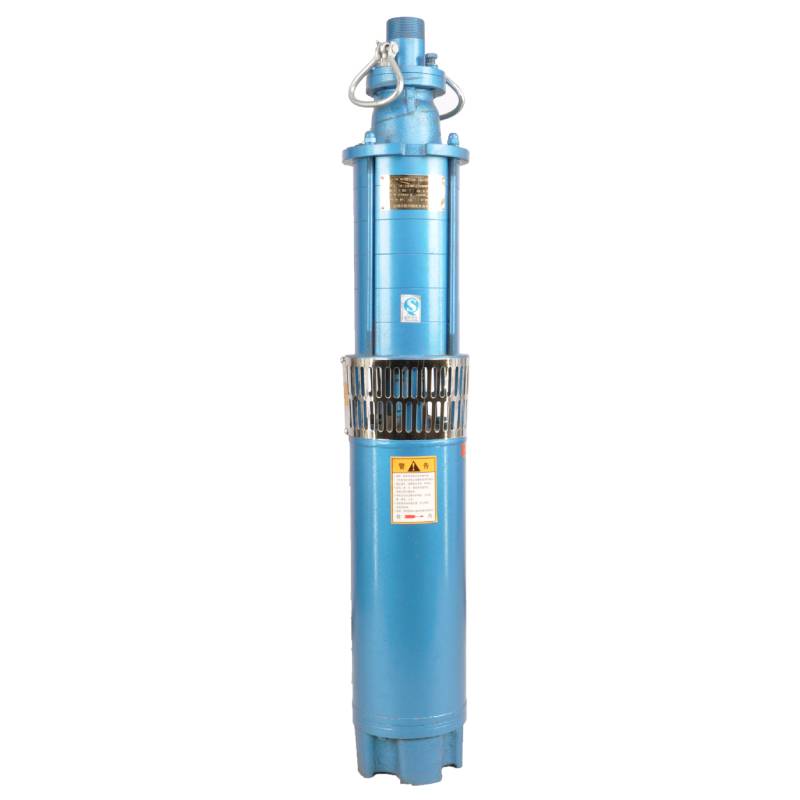Nov . 11, 2024 03:52 Back to list
Efficient Solutions for Deep Water Extraction with Submersible Well Pumps
Submerged Well Pumps An Essential Component for Water Extraction
Submerged well pumps, also known as submersible pumps, are specialized devices designed for extracting water from deep underground. These pumps are integral to various applications, including residential, agricultural, and industrial settings. Their ability to operate underwater makes them particularly effective for deep well applications, providing a reliable solution for accessing clean and potable water.
How Submerged Well Pumps Work
A submerged well pump operates by placing the entire pump assembly below the water surface inside a well. The main components include a motor, impeller, and volute casing. The motor is usually hermetically sealed to prevent water ingress, thereby protecting it from damage. The impeller creates suction, drawing water into the pump, which is then forced to the surface through a discharge pipe.
One of the significant advantages of submerged well pumps is their efficiency at handling high volumes of water. Since the motor is already submerged, it can operate continuously without overheating. Additionally, submerged pumps can reach depths of hundreds of feet, making them ideal for deep wells where traditional surface pumps would struggle.
Types of Submerged Well Pumps
Submerged well pumps come in various types, tailored for different specific applications. The most common types include
1. Centrifugal Pumps These are the most widely used submerged pumps. They utilize a rotating impeller to accelerate water, converting kinetic energy into hydraulic energy. Centrifugal pumps are suitable for a wide range of flow rates and depths.
2. Positive Displacement Pumps These pumps move water by trapping a fixed volume and forcing it into the outlet. They are less common for well applications but are particularly useful for certain industrial applications requiring precise flow rates.
submerged well pump

3. Vertical Turbine Pumps Designed for extreme depths, these pumps feature vertical turbine stages that allow for efficient water lifting. They are often used in large-scale agricultural and municipal water supply systems.
Applications of Submerged Well Pumps
The applications of submerged well pumps are vast. In residential settings, they provide water supply for households, irrigation for gardens, and even water features like fountains and ponds. In agriculture, these pumps are crucial for irrigation, ensuring crops receive adequate water during dry periods. In industrial contexts, submerged well pumps are employed for process water, cooling water supply, and dewatering projects.
Moreover, these pumps play an essential role in environmental applications, such as groundwater monitoring and remediation projects. They aid in the extraction of contaminated water, facilitating groundwater management and protection efforts.
Benefits of Submerged Well Pumps
Submerged well pumps offer numerous benefits that make them a preferred choice for water extraction. Their design allows them to work efficiently at greater depths than surface pumps. Additionally, they are generally quieter since they are submerged in water, leading to less noise pollution in residential areas.
Another significant benefit is their lower maintenance requirements. Since the motor is protected from external elements, the wear and tear is minimized, leading to a longer lifespan. Moreover, operators can easily install and remove these pumps for service or replacement, an essential factor for maintenance in remote or hard-to-access areas.
Conclusion
Submerged well pumps are vital for accessing and managing groundwater resources. With their efficient design and reliability, they ensure that water is available for various uses across residential, agricultural, and industrial domains. As demand for water continues to grow, the role of submerged well pumps in sustainable water management becomes increasingly vital. Their adaptability and efficiency make them an invaluable asset in both urban and rural settings, ensuring that communities have access to the essential resource of water.
-
Submersible Water Pump: The Efficient 'Power Pioneer' of the Underwater World
NewsJul.01,2025
-
Submersible Pond Pump: The Hidden Guardian of Water Landscape Ecology
NewsJul.01,2025
-
Stainless Well Pump: A Reliable and Durable Pumping Main Force
NewsJul.01,2025
-
Stainless Steel Submersible Pump: An Efficient and Versatile Tool for Underwater Operations
NewsJul.01,2025
-
Deep Well Submersible Pump: An Efficient 'Sucker' of Groundwater Sources
NewsJul.01,2025
-
Deep Water Well Pump: An Efficient 'Sucker' of Groundwater Sources
NewsJul.01,2025
-
 Submersible Water Pump: The Efficient 'Power Pioneer' of the Underwater WorldIn the field of hydraulic equipment, the Submersible Water Pump has become the core equipment for underwater operations and water resource transportation due to its unique design and excellent performance.Detail
Submersible Water Pump: The Efficient 'Power Pioneer' of the Underwater WorldIn the field of hydraulic equipment, the Submersible Water Pump has become the core equipment for underwater operations and water resource transportation due to its unique design and excellent performance.Detail -
 Submersible Pond Pump: The Hidden Guardian of Water Landscape EcologyIn courtyard landscapes, ecological ponds, and even small-scale water conservancy projects, there is a silent yet indispensable equipment - the Submersible Pond Pump.Detail
Submersible Pond Pump: The Hidden Guardian of Water Landscape EcologyIn courtyard landscapes, ecological ponds, and even small-scale water conservancy projects, there is a silent yet indispensable equipment - the Submersible Pond Pump.Detail -
 Stainless Well Pump: A Reliable and Durable Pumping Main ForceIn the field of water resource transportation, Stainless Well Pump has become the core equipment for various pumping scenarios with its excellent performance and reliable quality.Detail
Stainless Well Pump: A Reliable and Durable Pumping Main ForceIn the field of water resource transportation, Stainless Well Pump has become the core equipment for various pumping scenarios with its excellent performance and reliable quality.Detail
